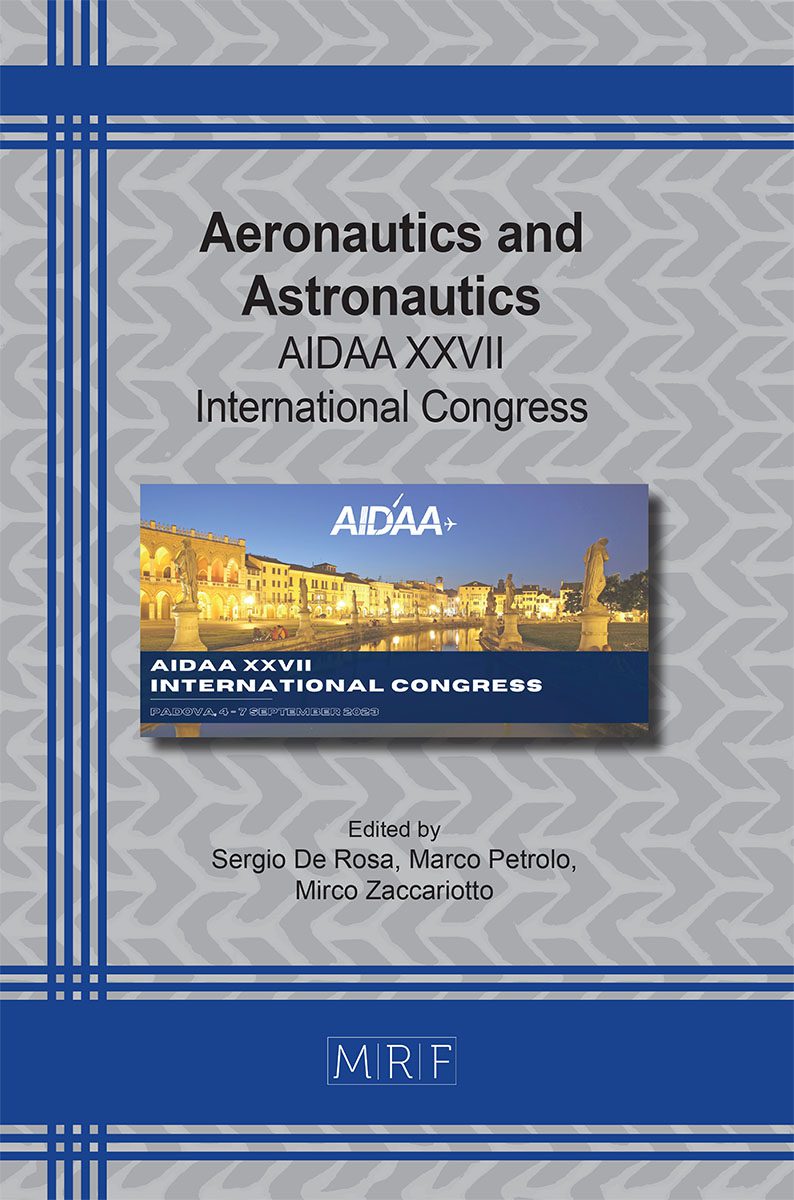Analysis of plasma formation during hypersonic flight in the earth atmosphere
Salvatore Esposito, Domenic D’ Ambrosio
download PDFAbstract. In this study we investigate the formation of plasma in hypersonic flight and its impact on radio communications and radar tracking. The transfer of kinetic energy from the vehicle to the surrounding gas in the hypersonic regime leads to the formation of plasma, which can cause interference with electromagnetic waves. By conducting a numerical simulation campaign using Computational Fluid Dynamics (CFD), we are determining the critical Mach number and altitude conditions that lead to plasma formation. The plasma generated at the nose of the vehicle and its subsequent convection along the body and in the wake are the main subjects of our investigation. The simulations include physical models that account for chemical, vibrational and electron-electron energy non-equilibria, using a two-temperature approach. The results indicate the Mach numbers and altitudes at which plasma formation can significantly affect the propagation of electromagnetic waves.
Keywords
Hypersonic Aerodynamics, Plasma, Non-Equilibrium, Thermo-Chemistry
Published online 11/1/2023, 5 pages
Copyright © 2023 by the author(s)
Published under license by Materials Research Forum LLC., Millersville PA, USA
Citation: Salvatore Esposito, Domenic D’ Ambrosio, Analysis of plasma formation during hypersonic flight in the earth atmosphere, Materials Research Proceedings, Vol. 37, pp 179-183, 2023
DOI: https://doi.org/10.21741/9781644902813-39
The article was published as article 39 of the book Aeronautics and Astronautics
![]() Content from this work may be used under the terms of the Creative Commons Attribution 3.0 license. Any further distribution of this work must maintain attribution to the author(s) and the title of the work, journal citation and DOI.
Content from this work may be used under the terms of the Creative Commons Attribution 3.0 license. Any further distribution of this work must maintain attribution to the author(s) and the title of the work, journal citation and DOI.
References
[1] Anderson, John David. Hypersonic and high temperature gas dynamics. AIAA, 1989.
[2] Stix, Thomas H. Waves in plasmas. Springer Science & Business Media, 1992.
[3] Qian, Ji-Wei, Hai-Li Zhang, and Ming-Yao Xia. “Modelling of Electromagnetic Scattering by a Hypersonic Cone-Like Body in Near Space.” International Journal of Antennas and Propagation 2017 (2017), Article ID 3049532. https://doi.org/10.1155/2017/3049532
[4] Park, Chul. “Review of chemical-kinetic problems of future NASA missions. I – Earth entries.” Journal of Thermophysics and Heat transfer 7(3), 1993: 385-398. https://doi.org/10.2514/3.431
[5] Park, Chul, Richard L. Jaffe, and Harry Partridge. “Chemical-Kinetic Parameters of Hyperbolic Earth Entry.” Journal of Thermophysics and Heat transfer 15(1), 2001: 76-90. https://doi.org/10.2514/2.6582
[6] Gupta, Roop N., et al. “A review of reaction rates and thermodynamic and transport properties for an 11-species air model for chemical and thermal nonequilibrium calculations to 30000 K.” NASA-RP-1232, 1990.
[7] Gnoffo, Peter A., Johnston, Christopher O., and Thompson, Richard A. “Implementation of Radiation, Ablation, and Free Energy Minimization in Hypersonic Simulations.” Journal of Spacecraft and Rockets. 47(2), 2010: 251–257. https://doi.org/10.2514/1.44916
[8] Skolnik, Merrill I. Radar handbook. McGraw-Hill Education, 2008.












